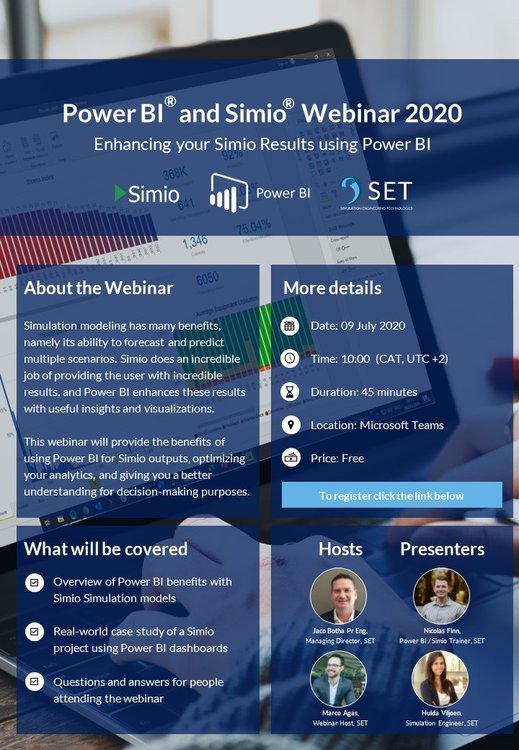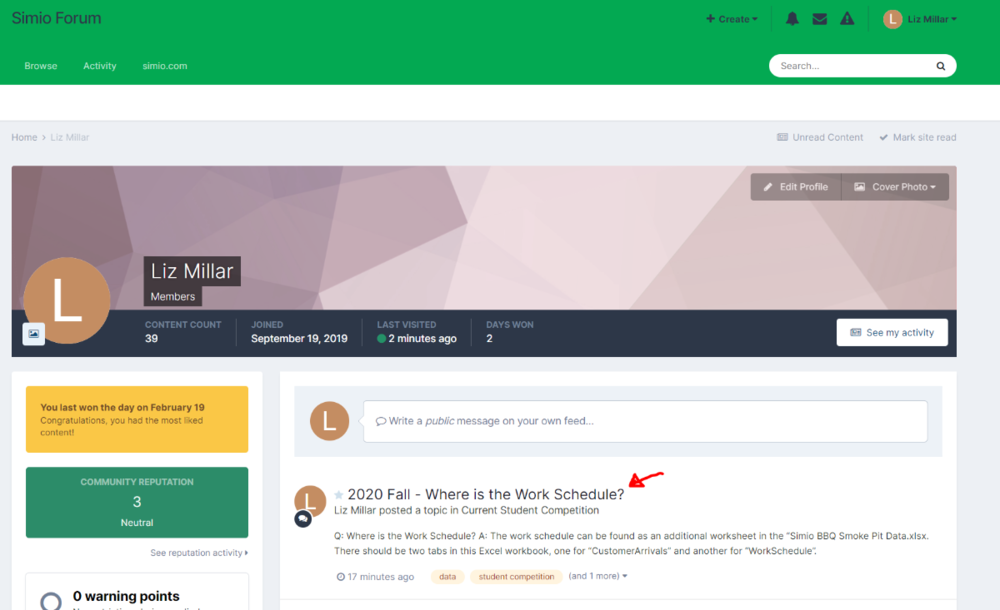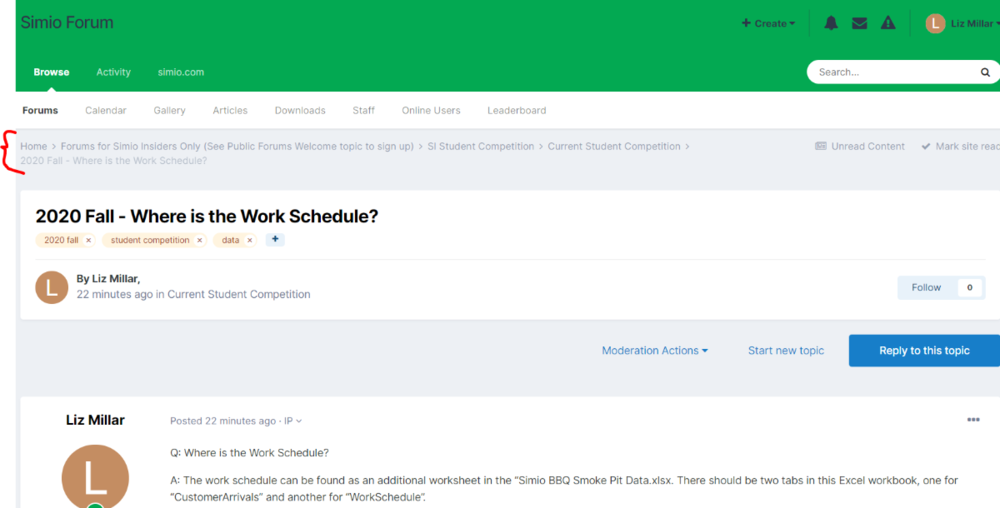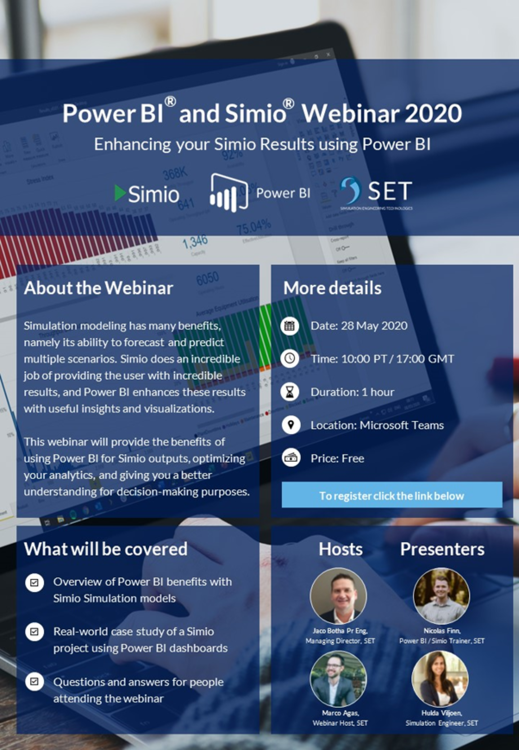Search the Community
Showing results for 'inventory location'.
-
Before you start adding state variables to a library object, I suggest that you first familiarize yourself with all of the existing states. One easy way to do this is to instantiate the object (e.g., Worker1) and then go to any expression field and type "Worker." and look at the list. In the case of Worker, there are over 100 states, functions, and properties built-in to the Worker object. Another way is to subclass the Worker, then go to the Definitions tab of the MyWorker object and you can see all of the built-in definitions by category: There is a pretty good chance that what you need is already there. But if not, use the same screen illustrated above and add whatever state (or property, event, ...) that you need. As far as referencing or assigning that custom state or a built-in state, it is done using ObjectName.StateName. For example if you added a state named TimeStartedMove to MyWorker, and you wanted to assign that value, you might assign MyWorker.TimeStartedMove to TimeNow. The tricky part, especially with more complex objects like Workers, is to determine exactly when/how to assign that value. Sometimes you can interact with the model itself to insert an Assign at the correct location (let's say in the Loaded Add-on Process). Or sometimes you might need to override the process logic in your custom object. The SimBits RecordDistanceTraveled and ElectricVehicle are examples to review.
-
Hello, I am trying to use git to track changes when working on Simio projects collaboratively. For this I am saving the project as *.simproj and the resulting file and folder structure looks good. But there are too many time stamp changes that make it difficult to track the "important" changes. For example, I only changed the location of the DefaultEntity in the model and hit save. The resulting changes are shown in the attached screenshot, with 20 files shown as changed. The main changes are related to the time stamp. Is there a way to configure Simio such that fewer files will be affected by each change? Thank you. Annika
-
Hi @jzhou, how would this work if I want to refer to the MemberOutput Node of a separator in an expression? I get lost at the following expression: Entity.Location.Parent.Node.AssociatedObject.Separator.Output.[what comes next?]
-
Hi!! I want to know in which object (in this case filler) my container entity is when certain event occurs. Is there a way to access this info? Thank you so much! Teresita
-
I am looking for the best way to set inventory levels for 150+ spare parts in my model. The inventory will need to decrease and increase throughout the simulation.
-
My simulation is looking at maintaining inventory levels at multiple servers across a road network. Inventory is delivered via transports and is processed at each station at a rate of 1 item per hour (constant). What I am trying to do is to run some experiments to determine effects of different parameters on delivery system performance (ability to maintain inventory at (between 0-12) at each server location for the duration (72 hours is the current short test case). I have my responses set up to report Input@Server1.AssociatedStationLoad however the numbers are being listed between 0 and 1 instead of 0 and 12. Additionally, in the experiment output I get a 1 or 0 per server per scenario iteration. What I need to see is if any (and what) server hits 0 at any given time by having an output give an inventory level at current time for the duration of each run. Any advice?
-
I want to create a list of materials from data table. I can refer to inventory replenishment policy from table by adding by adding "replenishment policy" property from data tables. But how do I define the default values of Re order point and Up to Level parameters for these auto-created materials? I cannot see such option even in the built in Material Table Scheme. Any help is really appreciated. Kind regards
- 1 reply
-
- materials
- data tables
- (and 6 more)
-
I think if you set the max to 30, if 14 are generated all 14 (or other <30 number) will enter the workers ride queue and will be transported. You could also keep the ride capacity at 1, model the 14 pallets as 1 entity (lets call this a shipment entity), have the worker move that 1 entity to the next location, and then use a separator to turn the shipment entity into some number of pallet entities. Attached is an example. example 9.23.22.spfx
-
Power BI & Simio Webinar - July 2020 Enhancing your Simio Results using Power BI MORE INFO AND REGISTRATION About the Webinar We're hosting this one to accommodate people in the central time zone as well as for people who missed the previous webinar Simulation modeling has many benefits, namely its ability to forecast and predict multiple scenarios. Simio does an incredible job of providing the user with incredible results, and Power BI enhances these results with useful insights and visualizations. This webinar will provide the benefits of using Power BI for Simio outputs, optimizing your analytics, and giving you a better understanding for decision-making purposes. What will be covered Overview of Power BI benefits with Simio Simulation models Real-world case study of a Simio project using Power BI dashboards Questions and answers for people attending the webinar More details Date: 09 July 2020 Time: 10:00 CAT (UTC +2) Duration: 45 minutes Location: Microsoft Teams (link on registration) Price: Free Hosts Jaco Botha Pr Eng, Managing Director, SE Marco Agas, Webinar Host, SET Presenters Nicolas Finn, Power BI / Simio Trainer, SET Hulda Viljoen, Simulation Engineer, SET
-
Feature request: Vehicle can pick up and drop off things(Entity)at (x,y,z) in free space , NOT node. This is especially useful to model battle field rescue work, when wounded soldier was randomly created in a zone (not on nodes). thanks
-
About the job Position: Industrial Simulation Services, Simulation Developer Location: Kitchener, Ontario Experience: 3-5 Years of relevant work experience Division: OTTO Motors Area of Study: Industrial/ Mechanical/ Mechatronics/ Systems Engineering NOTE: Must be able to travel to the U.S at time of application. About Clearpath Robotics Inc. Clearpath Robotics Inc. develops the future of robotics technology through development and sale of industry-leading self-driving technology, products, and services to over 500 of the world’s most innovative brands. Proprietary hardware, software, and services are delivered through the company’s research and industrial divisions: Clearpath Robotics and OTTO™ Motors. Clearpath Robotics Inc. is an award-winning company with recent awards including Robotics Business Review Top 50 Robotics Company, Edison Award for Innovation, Business Insider Top 40 under 40, and Canada’s Top 100 Employers. About Clearpath Robotics Research Solutions Clearpath Robotics’ research solutions group is a global leader in unmanned vehicle robotics for research and development, and provides hardware, software, and services to enable self-driving vehicle development, deployment, and operation. Clearpath Robotics works with over 500 of the world’s most innovative brands in over 40 countries, serving markets that span mining, military, agriculture, aerospace, and academia. Visit Clearpath Robotics atwww.clearpathrobotics.com. About OTTO™ Motors OTTO™ Motors is making material handling in industrial settings safer, easier, and more efficient through development of hardware and software that automates movement of goods in busy factories and warehouses. The company’s industry-leading self driving technology provides automated and on-demand material handling in the most demanding industrial environments, spanning automotive, medical device, aerospace, logistics, and more. Customers trusting their mission-critical material handling needs to OTTO Motors include Fortune 100 brands GE, Toyota, and Caterpillar. For more information visitwww.ottomotors.com. About the Job Having 10’s of robots run around our offices is great, but having hundreds of robots running around inside our computers is even better. Rich simulation environments offer a wide range of benefits to many aspects of our business: fast research, development and validation, sharp marketing tools and strong customer experience / support. We're looking for a Simulation Developer to create and run simulations that will help us optimize our robot fleets and system solutions. As a part of the Industrial Simulation Services (ISS) team, you will act as a subject matter expert and lead modeling and simulation activities. The ISS team works closely with our Systems Engineering, Applications Engineering and Project Management team, to support overall solution design from initial concept all the way to full system design and deployment. You will be building material flow strategies (based on self-driving vehicles) for products already in our arsenal and ones that do not yet exist. Your goal is to develop accurate and robust simulations to evaluate design, lower risk, and enhance the elegance of our solutions to fuel our growth. Primary Responsibilities Creating discrete event simulations for real and hypothetical systems, estimating fleet sizes, identifying traffic bottlenecks, testing what-if scenarios to optimize performance of robot fleets Consulting with project leads, sales team members and customers to obtain understanding of the requirements and to collect the necessary inputs Advising on simulation based metrics to evaluate system risks and performance Analyzing results and making recommendations for facility and material flow design Presenting your simulation results to our team of engineers, our sales team, and to clients Validating models against real world data to maintain accuracy relative to product portfolio Growing and improving our simulation library and internal templates for functionality, accuracy, scalability and efficiency Drafting functional specifications, proposals and effort estimation Recommending product feature and improvement ideas to our Product and Engineering teams, that lead to greater system optimization in the real world Additional tasks may include: Interacting with our development team as necessary to assess impact of new feature or product Developing simulation models to assist Sales & Marketing in demonstrating Clearpath's products and capabilities Using your expertise to assist our engineering services group in developing the more complex system concepts About You You're excited about the role that robots will play in the future, and intrigued by the challenge of joining a young company in this high-growth market. You have skills and experience that you know can make a difference with the Clearpath team, whether we're looking for them or not. You are driven and view work as more than just a job. You are motivated by making an impact on your workplace and you thrive on challenging and rewarding problems. Most of all, you want to be on the right side during the coming robot revolution. The ideal candidate will have: Proven success using simulation solutions to evaluate feasibility of facility design or operational changes Experience with discrete event simulation tools like Simio, AutoMod, AnyLogic, FlexSim, Delmia, and understanding of its limitations Experience collaborating with cross-functional and external client teams to gather comprehensive data required for model development and/or analysis Fearless in questioning to ensure end users get the most value out of your work. You understand the importance of early goal alignment and scope definition Effectively communicate complex model functionality to the client or internal team for assurance of model results accuracy Customer-first mindset Avid self-learner Ability to work independently with minimal supervision and manage deadlines. Able to cope with sudden jarring changes in projects, priorities, and the local gravity field. Bonus Points for: Experience identifying traffic and material flow bottlenecks and mitigating risk Experience in manufacturing industry Understanding of different industry warehouses. You see block diagrams and flowcharts everywhere and speak the language. Experience with Object-Oriented programming Working knowledge of one or more of C#, Python, VB.NET Exposure to working with ROS, Gazebo Past participation in simulation challenges What’s in it for you: Flexible Hours, Health Benefits, Parental Leave, Vacation, Equity, Community Days (paid), Half-Day Birthdays, Passionate and Dedicated Teams Curious to know more about the culture at Clearpath & OTTO, check out: https://clearpathrobotics.com/blog/category/blog/culture/ Come join us if you feel like our values resonate with you, and if you are interested in being a part of making industrial workplaces safer and revolutionizing automation. At Clearpath, we are committed to building and supporting a culture of diversity, inclusion, and accessibility. We hire the best talent regardless of race, color, creed, national origin, ancestry, disability, marital status, age, veteran status, six, sixual orientation, gender identity, and expression. If you require special accommodation to complete any portion of the application or interview process, please contact 1-800-301-3863.
-
I want to monitor the total inventory of all servers. Lets say only InputBuffer of all Servers is enough. So i want to see how much buffer i need/have when i have random server failures, repair times and changing processing times (later i also want to add random arrival times). So therefore i was focusing on the HourlyStatistic Simbit which i think is really helpful to get started with the Plots. Because i have many servers i did like in Simbit recommended and created a Server Object. With the intention that i can monitor the inventory of all servers together without doing the assignments for every single server. And then i created some experiments with the total inventory as a response value. I add a small model where u can see my experiments. So it worked but i can only see the inventory for each server. But i want the combined inventory. Goal of my model: Analyzing / Monitoring actual inventory level of all servers while changing failure rates, repair time and processing time. Problems: --> How can i monitor the inventory of all servers together, in the experiments as well as in the plots? I thought i could do that with the server object. --> Can i change a standard library server to my created server object without deleting already created servers and entering everything again? Thank you very much again, that forum helped me already a lot.I hope i could describe my problem clearly. (The model i added consists of 2 servers, 2 sinks, 2 sources. The vehicle transports the entities to the servers. Servers have random failure, repair and processing time. Vehicle drives always the same fixed tour and delivers specific entity to specific server.) InventoryMonitoring.spfx
-
Hi guys. I have a timer for each entity. I'd like to know the location (object) of each entity whenever its timer is fired. Can somebody give me some clues on how to do this? Thanks.
-
Hi Gocken, Thank you for your kind and quick response! I really like this use of a button! Unfortunately, I was not clear enough. As entities move through the system they carry quite a lot of state information. Our desire is at end or replication or an arbitrary time like a button click which a neat idea, to take an inventory of all the entities AND their states. This would mean capturing all the entities in each processing queue and through a write step. writing them out, either to an output table or a CSV. This operation is a bit complex. It does not seem one can search a processing queue to sequentially write out its members properties. I believe it is possible to maintain the residence of servers by maintaining that in a special output table which is tedious to maintain and set up. I greatly appreciate your response! Best Regards, Jim
-
We are currently updating our forum space! During this time, your posts may be moved from their original location. Here is one way to find your posts and their new location: 1. Go to your Profile. You can do this by selecting your profile picture in the upper right hand corner, or select your name in the upper right hand corner and then select Profile in the drop down: 2. Your profile should contain a collection of your posts. You can select your post's title to be direct to its current location. 3. The top of the page will list the forum path location.
-
Hello everyone! I'm just looking for the Standard Library file (it would be a .spfx file perhabs) but I can't find it. It would help me on my understanding about creating new libraries. Thanks!
-
Hi all, how would you approach this model? Workers are transporters and must be present at the servers to supervise each step. For now I have one worker and am using a personal edition of Simio. Server1 is an observation microscope where entities pass through a survey step. Server2 is a robot dispensing glue that has a finite window of appropriate elasticity after mixing. I started my model with a version very similar to the MoveableOperator where my worker goes back and forth between two servers running 6 entities individually before switching... six being the number of entities we believe can be processed with one batch of glue. When trying to model the delay step of glue mixing (ideally with worker movement to a separate node or location) I thought to add it as the first in a task sequence at Server2 with the condition that it only need to be applied when the server buffer was full of the 6 entities. This seemed to not fit well with the priority decisions that the worker already had for movement and the worker stalled. Basically, how would you model the fact that every 90 minutes we need a 15 minute delay for glue mixing and that once the glue is mixed the priority needs to be at Server2 until glue elasticity runs out?
-
Power BI & Simio Webinar - May 2020 Enhancing your Simio Results using Power BI MORE INFO AND REGISTRATION About the Webinar Simulation modeling has many benefits, namely its ability to forecast and predict multiple scenarios. Simio does an incredible job of providing the user with incredible results, and Power BI enhances these results with useful insights and visualizations. This webinar will provide the benefits of using Power BI for Simio outputs, optimizing your analytics, and giving you a better understanding for decision-making purposes. What will be covered Overview of Power BI benefits with Simio Simulation models Real-world case study of a Simio project using Power BI dashboards Questions and answers for people attending the webinar More details Date: 28 May 2020 Time: 10:00 PT / 17:00 GMT Duration: 1 hour Location: Microsoft Teams (link on registration) Price: Free Hosts Jaco Botha Pr Eng, Managing Director, SE Marco Agas, Webinar Host, SET Presenters Nicolas Finn, Power BI / Simio Trainer, SET Hulda Viljoen, Simulation Engineer, SET
-
Process Logic Design for Data-Generated Models
oalotaik replied to oalotaik's topic in SI General Discussions
Thanks Adam for the reply. I know a fair amount about Processes; I just needed a clarification about some aspects related to large models created using tables. The example I mentioned in the original post may be simple but it could easily scale to include 100's of locations. I will give some examples of these aspects that get tricky in such large models below. Thanks Glenn for the clarification. The tip about finding where processes are being referenced in a model is great! The MultiEchelonSupplyChain example may look simple, but it has the potential to be complex. When I asked the question what I had in mind is a similar model but with 100s of locations like DistributionCenter and Retailer (Basic Nodes). Imagine you want 300+ basic nodes (like in my case) to have the same add-on process. Imagine having 300+ inventory elements that you want to write statistics for using a Write step. It's tedious to do things manually. As for referencing the same add-on process for 100s of objects (basic nodes in my case), I found a trick, which is to add the add-on process to one of the objects and then sub-class it so that the process becomes a default for the newly sub-classed object. Then change all the other objects to the new sub-classed object. As for writing statistics for 300+ inventory elements, I couldn't find a way to automate the process. To be clear, I want (for each inventory element) to write statistics at various points throughout the simulation run. The standard reported stats for inventory elements are only "Totals" or "Averages" or a function of the two. What I want is to see how a statistic changes over time, so I need to write to a CSV file using a Write step. When working with large models, there's a need for automating some modeling aspects. Creating objects and elements can be easily automated using tables. It's dealing with these created objects and elements that sometimes needs tricks and workarounds to automate. -
Hi Ryan, -The model gets stuck at about an 1 hour into it. Can't get it past the vehicle going back to the 'Bldg,' as seen when I track the vehicle. -The distributions are all random triangular with set parameters in the Sequence1 Table. The idea was that the 35 people/Entities would arrive at the Bldg Source and as Entities the JobsTable would assign a random triangular number of workers to a job and then start ferrying them per the sequence in the Sequence1 Table from the Key Column from the Bldg. The vehicle can carry 6 people but it seems to only carry 4 at a time. Also, the ferrying is completed at about an hour and the vehicle just stops at the Bldg with 4 passengers. Instead, it needs to continue ferrying by having the entities 'call' the vehicle to their location to continue the route sequence, through LunchBreak, and then get eliminated at the EndOfShift node. 11May.v2.spfx
- 6 replies
-
- sequence table
- model trace
- (and 3 more)
-
Process Logic Design for Data-Generated Models
gdrake replied to oalotaik's topic in SI General Discussions
To answer your question specifically with regards to the MultiEchelonSupplyChain example, the OnReplenishOrder process that you see in the process logic of the data table driven example is automatically executed by the Inventory elements when the inventory detects the need to replenish. Go to Definitions -> Elements and click on the Inventory elements and you will see where that process is being referenced. The ShippingReceivingLogic process is being executed when an entity enters any of the BasicNodes placed in the Facility View. For example, click on the DistributionCenter node and in the Add-On Processes -> Entered property you will see the name of that process befiling referenced. The TryFulfillOrder process is executed by the OnCustomerOrder process using an Execute step, which is in term triggered by a customer order arrival. Note that If you are trying to figure out where the name of a process is being referenced, you might go to Project Home in the ribbon UI and go to the Search window. And then search for the name of the process in the model, and it will show you the locations where it is being referenced. -
Hi everyone For the competition this year, we have to make waves for the warehouse system and Simio has sent us a base model of the wave system (attached below) but I am unsure how to take the base model for the wave system that simio sent us and integrate it with my own model . So currently my shelves are all sources and there's specific weights going from the source to cater for if the item is for future/now, apparel /footwear, case/multi/single and if it's at the top or bottom shelf and the source produces around 30 entities at a time at certain time intervals and the vehicles will pick it up from the node and take it to its specific location.( I calculated all the weights : for example 70 percent of items are footwear and 30 percent are apparel, etc) Can anyone please suggest how I can integrate the wave system into my model ? ( I was thinking of somehow connecting the base model to my sources??) Thanks a lot BaseModel_May2020_StudentCompetition.spfx
-
I have followed the simbit Servers Using Task Sequence with Data Tables Job Shop as it is close to what I want to do. I have a process to model where most of the work is done in 1 physical location. There are 2 problems I am running into: 1) Some tasks once completed should trigger another server to start processing (Ex. when task 4 completes it should trigger tasks c and d and server 2) 2) I have tasks 1, 2, 3 and 4 that can run in parallel. I also have tasks a, b, c and d that can run in parallel. However task 4 needs to complete before c and d can start, 1 has to complete before a can start, and 2 and 3 must complete before b can start. Any suggestions on how to handle these?
-
You can just use a process with a WAIT step. On entity arrival you will fire and event and the process will go on. I also belive that a worker is derived from entity so you can use workers instead of entities. Or the best fitting thing is to use consume step to consume a material (the tools). And have two inventories for it (one near the machine, one in the warehouse of tools). There are some simbits with the basic inventory concepts.
-
Thanks Gustavo, actually what worked for me was ContainerEntity.Location.Parent.Name! Anyway thank you very much. I have another doubt which I think is far more complicated. I have two "streets" with a container entity moving moving along each of them. This streets have both fillers and emptiers, and I wish to write in excel every time a container entity goes from a filler to an emptier and how long that took. For example if my container on street 1 goes from filler_2 to emptier_6 I would like a row in excel with those 3 columns: starting filler, ending emptier and time between. I achieved this without problem for one of the streets (adding add on process triggers to all of the fillers and another for all of the emptiers). The thing is when I add this same processes to the emptiers/fillers of street 2, my excel goes crazy and obviously because of two reasons: the time I register to calculate time between is being updated in both streets every time a container goes out of an emptier, and exactly the same happens with the row that this 3 things have to be written in the excel. I don't know hoy I can manage to construct the variables time and row_count without them getting confused and hence my excel becoming useless. Thanks, again!!!





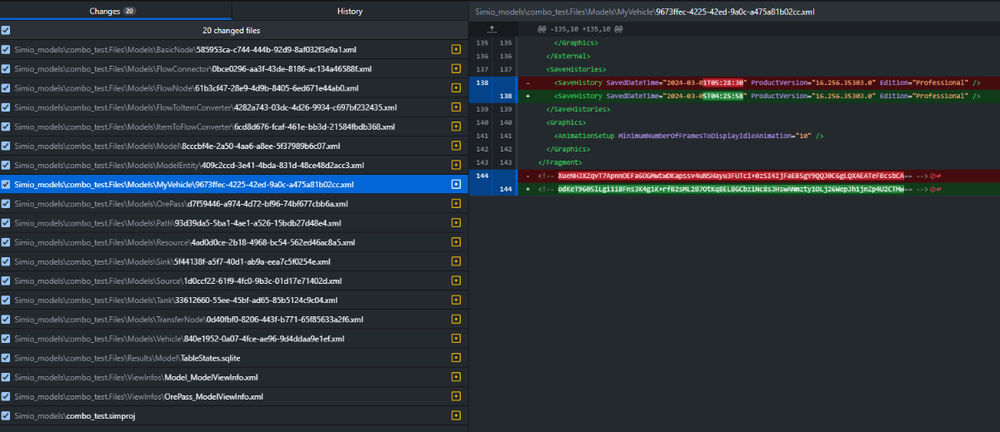



.thumb.jpg.d86860331a58e852a3b64f28348c2d88.jpg)
